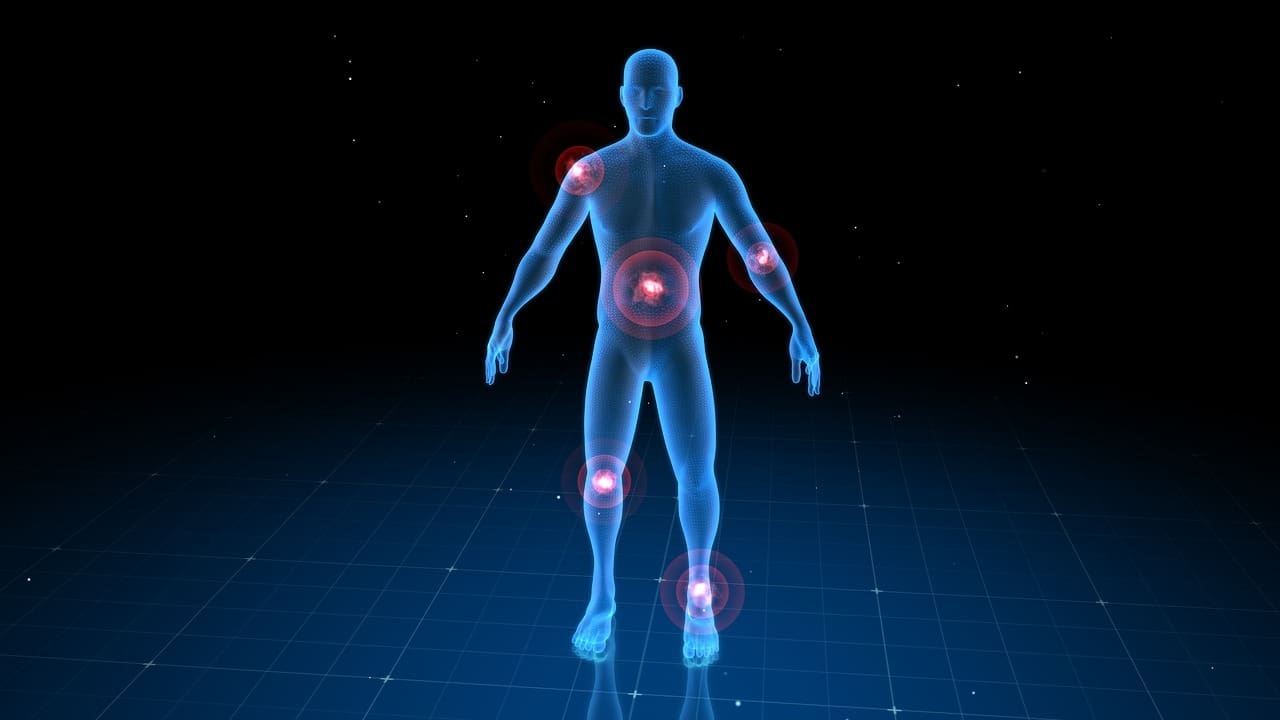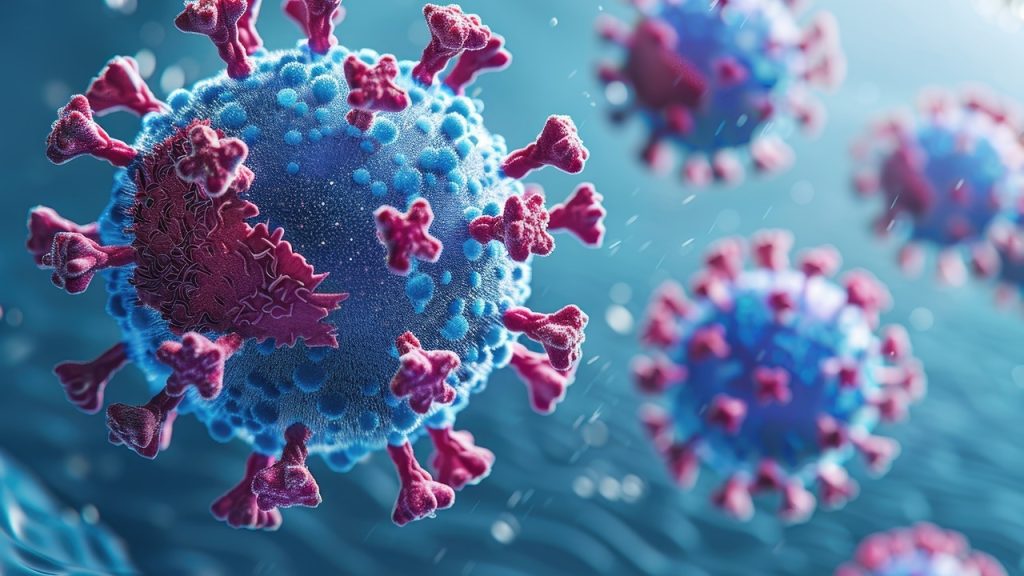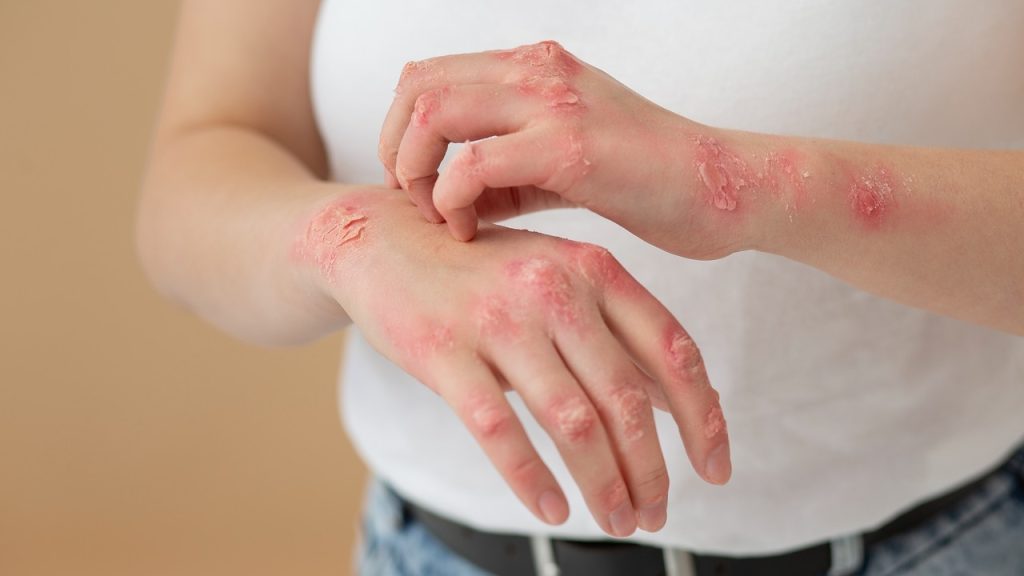
If you’ve had a stem cell or bone marrow transplant, knowing the early signs of a serious problem is key. At Liv Hospital, we focus on watching and managing graft versus host disease (GVHD) symptoms closely. This is to make sure our patients get the best care possible.
GVHD happens when the donor’s immune cells attack the recipient’s body. This can lead to serious issues. We’ll look at the 12 main signs of GVHD, like skin, digestive, and liver problems. This is to help patients and their caregivers spot and deal with these symptoms quickly.

For those who have had a transplant, knowing about GVHD is key to staying healthy. GVHD happens when the immune cells from the donor attack the recipient’s body. This is because the donor’s cells see the recipient’s body as foreign.
GVHD can really affect a transplant recipient’s life. It’s important for patients to know the risks and symptoms. This way, they can get help quickly. GVHD can affect the skin, liver, and stomach.
People who get an allogeneic stem transplant might get GVHD. Knowing about the GVHD medical abbreviation helps patients understand their treatment better.
GVHD is divided into acute and chronic types, based on when it starts and its symptoms.
Acute GVHD usually starts within 100 days after the transplant. Symptoms can be mild or severe, like skin rash, diarrhea, and liver problems. Spotting signs of acute GVHD early is key to managing it well.
Chronic GVHD can start after three months and last for years. It affects many organs and can cause a lot of problems. Knowing the difference between acute GVHD symptoms and chronic GVHD is important for long-term care.
| GVHD Type | Timeline | Common Symptoms |
|---|---|---|
| Acute GVHD | Within 100 days post-transplant | Skin rash, diarrhea, liver dysfunction |
| Chronic GVHD | After 3 months post-transplant | Multi-organ involvement, skin thickening, dry eyes |
How long GVHD lasts varies a lot. Some people get better quickly, while others face ongoing challenges. The question of how long does graft-versus-host disease last is complex. It depends on how severe the GVHD is and how well treatment works.

GVHD often shows up as skin symptoms, with rash and redness being the most common signs. Knowing these symptoms is key for early detection and management.
GVHD skin eruptions can look different and vary in severity. Common signs include redness, itching, and a maculopapular rash. The rash might start small and grow into bigger areas.
It’s important to tell GVHD skin symptoms apart from other rash causes like allergies or infections. A detailed medical check-up is needed to figure out the cause of skin symptoms in transplant patients.
The rash from GVHD can spread in different ways. It often starts on the palms and soles before spreading to other parts of the body.
Patients should see a doctor if they notice unusual skin symptoms. Signs that need medical attention include:
“Prompt evaluation and treatment of GVHD symptoms can significantly impact patient outcomes.”
Understanding GVHD signs and when to get medical help is vital. This way, patients can get timely care and possibly better outcomes.
GVHD can cause skin to blister and peel, showing it’s getting worse. This is a serious sign that needs quick medical help.
In acute GVHD, the skin can get very bad. It might blister and peel. These signs are part of a bigger problem with the skin caused by GVHD.
Characteristics of Severe Skin Manifestations:
Dealing with severe skin problems in GVHD needs a few steps. Doctors aim to lessen symptoms, stop infections, and help the skin heal.
| Treatment Approach | Description | Benefits |
|---|---|---|
| Topical Corticosteroids | Application of corticosteroid creams or ointments to reduce inflammation | Reduces inflammation, promotes healing |
| Wound Care | Proper dressing and care of blistered or peeled skin areas | Prevents infection, promotes healing |
| Systemic Immunosuppression | Use of systemic medications to suppress the immune response | Reduces graft-versus-host reaction |
Knowing about the bad skin problems in acute GVHD helps doctors. They can then use the right treatments. This makes patients’ lives better and their health improve.
Abdominal cramps and pain are warning signs of GVHD. GVHD is a complication after a bone marrow or stem cell transplant. It happens when the donor cells attack the recipient’s body. Spotting symptoms early is key to managing GVHD.
Abdominal pain can be a GVHD symptom, but it’s not unique to it. Other factors can also cause similar pain. We must look at the patient’s medical history and any medications that might affect the stomach.
GVHD-related abdominal pain often comes with diarrhea, nausea, or vomiting. These symptoms help tell GVHD apart from other causes.
To diagnose GVHD, doctors do blood work, stool tests, and sometimes endoscopic exams. Knowing the cause of abdominal pain is vital for the right treatment.
Managing GVHD-related abdominal pain requires a few steps. First, we treat GVHD to reduce inflammation and protect the stomach. This might include immunosuppressive medications to calm the immune system. For more on bone marrow transplant side effects, including GVHD, visit Liv Hospital’s resource on bone marrow transplant side.
We also focus on pain relief. This includes medications like analgesics and anti-inflammatory drugs. Diet changes are also important. Patients are often told to eat bland foods to avoid making stomach pain worse.
| Pain Management Approach | Description | Benefits |
|---|---|---|
| Immunosuppressive Therapy | Medications to reduce the immune system’s attack on the body | Reduces GVHD severity, potentially decreasing abdominal pain |
| Analgesics and Anti-inflammatory Drugs | Medications to relieve pain and reduce inflammation | Provides symptom relief, improving quality of life |
| Dietary Adjustments | Changes in diet to avoid exacerbating gastrointestinal symptoms | Helps manage symptoms, reduces discomfort |
By tackling GVHD and its symptoms in a detailed way, we can better the lives of patients. It’s important for patients to work with their healthcare team to create a treatment plan that fits them.
The GI tract often gets affected in GVHD, causing symptoms like diarrhea. This can really hurt a patient’s quality of life. We’ll look into GVHD’s impact on the stomach and intestines and how to handle it.
GVHD diarrhea can be quite different. Knowing about these differences is key to managing it well. It can be mild or very severe, with the latter needing quick medical help.
Nutrition is very important for patients with GVHD GI symptoms. Good nutrition is essential for healing and getting better. Ways to support nutrition include:
It’s important to work with a healthcare team to find the best nutrition plan for GVHD GI symptoms.
Nausea and vomiting are big worries for people with GVHD. These symptoms can really hurt a patient’s life quality, how well they eat, and their overall health.
Nausea and vomiting make it hard for GVHD patients to take their meds. If they can’t keep their meds down, it might not work right. These symptoms can also cause malnutrition and dehydration, making the patient weaker.
We need to watch how well patients are eating and adjust their treatment plans. This might mean changing when they take their meds, using antiemetic drugs, or giving them food and water in other ways, like through IVs or tubes.
Managing nausea and vomiting is key to making GVHD patients feel better. Antiemetic drugs are very important in this fight. The right drug depends on how bad the symptoms are, the patient’s health history, and how it might mix with other meds.
| Antiemetic Class | Examples | Mechanism of Action |
|---|---|---|
| Serotonin (5-HT3) receptor antagonists | Ondansetron, Granisetron | Block the action of serotonin, a neurotransmitter involved in initiating the vomiting reflex |
| Dopamine receptor antagonists | Metoclopramide | Block dopamine receptors in the brain, reducing the vomiting impulse |
| Corticosteroids | Dexamethasone | Have anti-inflammatory properties and can help reduce nausea and vomiting |
There are other ways to help with nausea and vomiting too. Eating small meals, avoiding certain foods, and drinking lots of water can help. Even things like acupuncture or relaxation techniques might make symptoms better.
Hepatic GVHD can cause jaundice, which makes the skin and eyes turn yellow. This happens because the liver isn’t working right. We’ll look at how to spot jaundice and handle liver problems.
Jaundice is often the first sign of liver trouble in GVHD. It shows up as yellow skin and eyes because of too much bilirubin. Spotting jaundice early is key because it means the liver might be failing. People and their caregivers should watch for any color changes in skin and eyes.
Keeping an eye on liver function is key in fighting GVHD. This means regular blood tests to check liver enzymes and bilirubin. Managing liver problems well might mean changing medicines, eating differently, or trying other treatments to help the liver.
We stress the need for a team effort in treating hepatic GVHD. Doctors like hematologists and hepatologists, along with others, work together to give the best care.
GVHD can cause mouth sores and dryness. These symptoms make everyday tasks hard. Eating and speaking become big challenges.
Graft-Versus-Host Disease (GVHD) happens after a transplant. The donor’s immune cells attack the host’s body. Chronic GVHD symptoms are tough, and oral issues are common and painful.
Oral mucositis is a common and painful GVHD issue. It causes inflammation and ulcers in the mouth. Symptoms include:
These symptoms make eating, speaking, and oral care hard. It adds to the patient’s struggles.
Managing GVHD oral symptoms needs a good oral care plan. This includes:
By sticking to these plans, patients can ease their discomfort. This helps them eat, speak, and keep their mouth healthy.
Dry eyes and vision changes are common in GVHD patients. These symptoms can really affect a patient’s life. It’s important to know why they happen and how to manage them.
GVHD can harm the lacrimal gland, leading to less tear production. This causes dry eye syndrome. It makes eyes feel dry, blurry, and more sensitive to light. Key symptoms include:
Without enough tears, the cornea can get damaged. This might lead to ulcers or scarring. It’s vital to see an eye doctor often to avoid serious problems.
To deal with GVHD eye symptoms, there are a few things you can do:
We suggest that GVHD patients work with their healthcare team. This includes an eye doctor, to keep their eyes healthy.
GVHD patients often face musculoskeletal symptoms like joint pain and muscle weakness. These issues can really affect their daily life and activities.
Chronic GVHD can make it hard for patients to move around. They might find it tough to do simple tasks because of joint pain and muscle weakness. The main reasons for these problems are:
To learn more about how GVHD affects muscle cramps, check out this resource.
Physical therapy is key in managing GVHD’s musculoskeletal symptoms. We suggest a custom exercise plan to keep joints mobile and muscles strong. Good exercises include:
It’s vital for patients to work with healthcare pros to create a plan that fits their needs and limits.
GVHD is a condition that affects the whole body, causing fatigue and other symptoms. It’s not just a local issue; it impacts many systems in the body. This leads to a variety of symptoms that can greatly affect a patient’s life quality.
Managing fatigue is key for GVHD patients. Energy conservation strategies help keep energy levels up and make daily tasks easier. These strategies include pacing activities, taking breaks, and focusing on important tasks first.
Creating a daily schedule with rest periods can help. It prevents overexertion and saves energy for important tasks.
| Strategy | Description | Benefit |
|---|---|---|
| Pacing Activities | Spreading out activities throughout the day | Reduces overall fatigue |
| Regular Breaks | Taking short breaks between tasks | Helps in recovery and prevents burnout |
| Prioritizing Tasks | Focusing on essential tasks first | Ensures important tasks are completed despite limited energy |
Fatigue in GVHD patients can come from the disease, treatments, or other health issues. It’s important to know if the fatigue is from GVHD or something else.
GVHD fatigue is deep and lasting, not helped by rest. It often comes with other symptoms like fever, weight loss, and feeling unwell.
Fatigue from GVHD greatly affects a patient’s quality of life. It impacts physical, emotional, and social well-being. Treating fatigue and other symptoms is key to improving life quality.
Healthcare providers should work with patients to create personalized plans. These plans should meet each patient’s specific needs and situation.
Late-stage chronic GVHD can show up as skin tightening and sclerosis. This makes it hard for patients to move around. It’s important to know how this disease gets worse and affects people.
Chronic GVHD can cause fibrosis, where too much fibrous tissue forms. This makes the skin tight and stiff. It limits how well patients can move and do everyday things.
Key aspects of progressive fibrosis include:
GVHD can last different lengths of time for different people. It depends on how bad the disease is, how well treatment works, and how the patient reacts.
Several things can change how long and how bad GVHD is. These include:
| Factor | Impact on GVHD |
|---|---|
| Age of the patient | Older patients may experience more severe GVHD |
| Type of transplant | Allogenic transplants have a higher risk of GVHD |
| Treatment response | Effective treatment can reduce GVHD severity and duration |
Knowing what affects GVHD is key for helping patients. It helps doctors plan better treatments. Spotting signs like skin tightening and sclerosis early can help improve patient care.
Graft Versus Host Disease (GVHD) is a serious issue after stem cell or bone marrow transplants. It’s key to spot and treat GVHD symptoms early to help patients get better.
We’ve looked at GVHD signs like skin rashes, belly pain, and diarrhea. Catching these symptoms early can greatly improve a patient’s life after a transplant.
Knowing about GVHD symptoms helps doctors create better treatment plans. This knowledge helps us support patients better during tough times.
It’s vital to catch GVHD early and act fast. We stress the need to watch for symptoms and get medical help right away. This ensures the best care for those getting stem cell or bone marrow transplants.
GVHD is a problem that can happen after a stem cell or bone marrow transplant. It occurs when the donated immune cells attack the recipient’s body.
Acute GVHD signs include skin rash and redness, and stomach pain. It also includes diarrhea, nausea, vomiting, jaundice, and liver issues.
GVHD’s length varies by person and condition severity. Acute GVHD happens early, within months after transplant. Chronic GVHD can last years.
Chronic GVHD symptoms include skin tightening and joint pain. It also includes dry eyes, vision changes, and mouth sores.
GVHD diagnosis combines clinical symptoms, lab tests, and biopsy results.
Acute GVHD starts early, with sudden symptoms. Chronic GVHD starts later, with gradual symptoms.
GVHD treatment uses immunosuppressive drugs and corticosteroids. These aim to reduce immune response and manage symptoms.
GVHD’s eye symptoms include dry eyes, vision changes, and corneal damage.
Managing GVHD fatigue involves pacing activities and taking breaks. Prioritize rest to conserve energy.
GVHD can greatly affect quality of life. It causes fatigue, pain, and digestive issues. These symptoms impact daily activities and overall well-being.
Distinguishing GVHD symptoms requires a medical evaluation. This includes lab tests, biopsy results, and medical history review.
GVHD stands for Graft-Versus-Host Disease.
GVHD signs include skin rash, stomach pain, diarrhea, nausea, vomiting, jaundice, and liver issues. These are among the symptoms.
Subscribe to our e-newsletter to stay informed about the latest innovations in the world of health and exclusive offers!
WhatsApp us